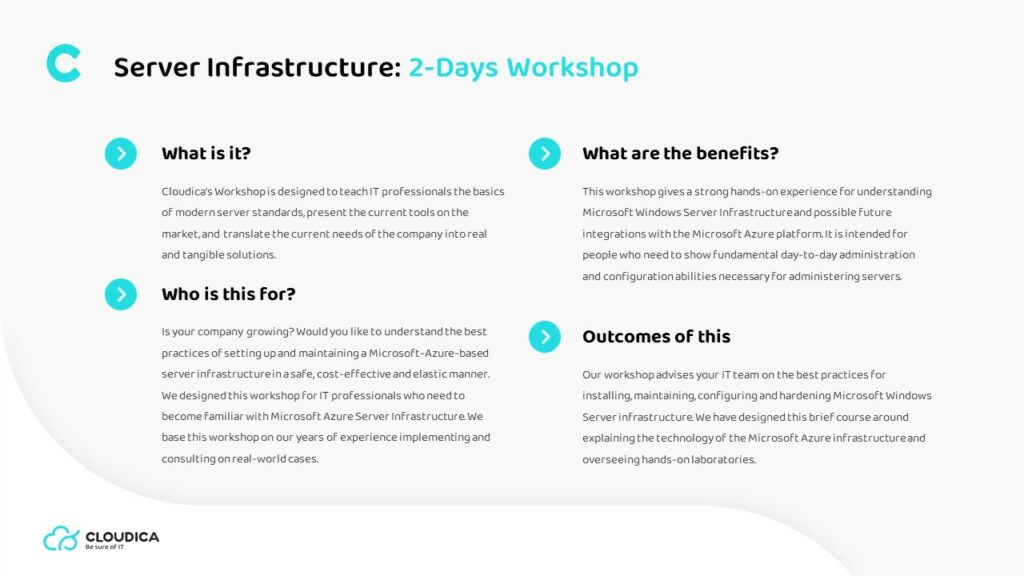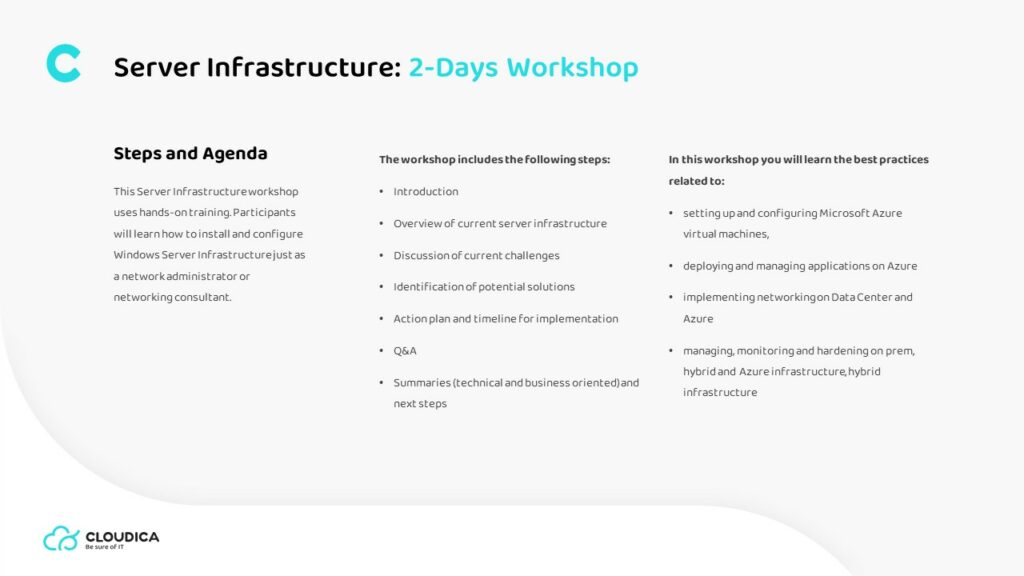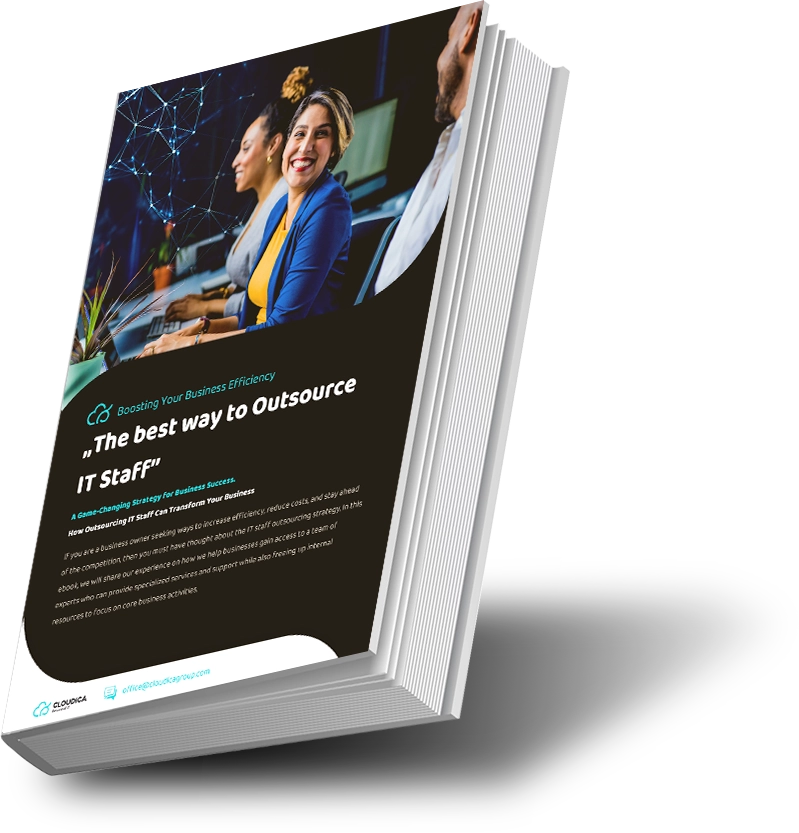2-Days Workshop
Server Infrastructure
What is it?
Cloudica’s Workshop is designed to teach IT professionals the basics of modern server standards, present the current tools on the market, and translate the current needs of the company into real and tangible solutions.
What is for?
Is your company growing? Would you like to understand the best practices of setting up and maintaining a Microsoft-Azure-based server infrastructure in a safe, cost-effective and elastic manner. We designed this workshop for IT professionals who need to become familiar with Microsoft Azure Server Infrastructure. We base this workshop on our years of experience implementing and consulting on real-world cases.
What are the benefits?
This workshop gives a strong hands-on experience for understanding Microsoft Windows Server Infrastructure and possible future integrations with the Microsoft Azure platform. It is intended for people who need to show fundamental day-to-day administration and configuration abilities necessary for administering servers.
Outcomes of this
Our workshop advises your IT team on the best practices for installing, maintaining, configuring and hardening Microsoft Windows Server infrastructure. We have designed this brief course around explaining the technology of the Microsoft Azure infrastructure and overseeing hands-on laboratories.
Steps and agenda
This Server Infrastructure workshop uses hands-on training. Participants will learn how to install and configure Windows Server Infrastructure just as a network administrator or networking consultant.
The workshop includes the following steps:
• Introduction
• Overview of current server infrastructure
• Discussion of current challenges
• Identification of potential solutions
• Action plan and timeline for implementation
• Q&A
• Summaries (technical and business oriented) and next steps
In this workshop you will learn the best practices related to:
• setting up and configuring Microsoft Azure virtual machines,
• deploying and managing applications on Azure
• implementing networking on Data Center and Azure
• managing, monitoring and hardening on prem, hybrid and Azure infrastructure, hybrid infrastructure
Most popular offerings
Contact
Ready to meet the only technology partner you'll ever need?









